Massacre

Brief Synopsis
Cast & Crew
Alan Crosland
Richard Barthelmess
Ann Dvorak
Dudley Digges
Claire Dodd
Henry O'neill
Film Details
Technical Specs

Synopsis
Joe Thunder Horse makes a lot of money stunt riding at the Chicago World's Fair and, when not working, lives a modern life. He becomes aware of how little he knows about his Sioux background when his white girl friend Norma proudly shows him Indian artifacts that she has purchased as decorations. Joe, learning that his father is dying, returns to the reservation where he finds that his father is not receiving medical care. Lydia, a college-educated Indian, warns Joe that life on the reservation is not what he thinks. Joe slowly realizes that the white leadership of the reservation is corrupt. Doctor Turner never treats the sick, and Elihu P. Quissenberry, the agent, and Shanks, the undertaker, are running a racket to get Indian lands from the families of the dead. When Joe's father dies, Joe refuses to allow Shanks to bury him, choosing instead to hold a traditional Indian funeral. At the funeral, Shanks rapes Joe's sister Jenny. After he learns what happened, Joe drags Shanks behind his car, severely injuring him. Quissenberry arrests Joe for attempted murder, and his court appointed lawyer pleads him guilty. Lydia sneaks Joe a set of car keys, and he escapes to Washington, D.C., where he tells the whole story to J. R. Dickinson, head of the Bureau of Indian Affairs. Dickinson agrees to help Joe fight for Indian rights. Shanks dies and Joe is arrested for murder. Quissenberry's men kidnap Jenny to keep her from testifying. Once again, Joe escapes from jail to find her. After she is found, Quissenberry reveals his corruption and is removed from office. Dickinson offers Joe a job, which frees Joe to ask Lydia to marry him.

Director

Alan Crosland
Cast

Richard Barthelmess

Ann Dvorak
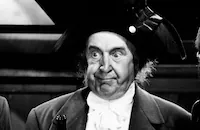
Dudley Digges

Claire Dodd

Henry O'neill

Robert Barrat
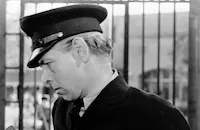
Arthur Hohl

Sidney Toler
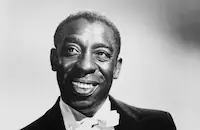
Clarence Muse
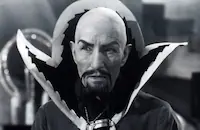
Charles Middleton

Tully Marshall
Wallis Clark

Wm. V. Mong

De Witt Jennings
Juliet Ware
James Eagles
Frank Mcglynn Sr.
Agnes Narcha

Douglass Dumbrille

William Davidson

Henry Kolker
George Blackwood
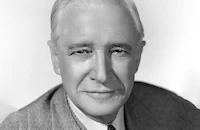
Samuel Hinds
Crew

Film Details
Technical Specs

Articles
Massacre (1934)
Revealing the influence in Hollywood of New Deal liberality, Massacre made good on the (limited) progress of such silent films as Paramount's The Vanishing American (1925) and Redskin (1929), Cinema Corporation of America's Braveheart (1925) and Universal's Red Clay (1927), albeit this time out giving an actual voice to its Native American protagonist. (Columbia's End of the Trail (1932) was another early talkie that spoke up for the Indians, albeit via pale-faced mouthpiece Tim McCoy.) It is unknown what Dvorak thought of the job, which required her to apply the bronze toner of an assimilated Sioux (who works as a stenographer in a federal office) but the actress participated in a bit of studio ballyhoo to help sell Massacre. During principal photography in October 1933, Warners announced that Dvorak had been bitten by a rattlesnake while on location in Calabasas. A reporter for the Los Angeles Examiner was invited to the home Dvorak shared with husband Leslie Fenton and to photograph the actress convalescing in bed. Stranger still was the claim that the actress planned to study her own tainted blood under a microscope when she was feeling sufficiently fit.
The announcement of the snake attack upon Dvorak had at least one unforeseen side effect - it made Native American extras imported to the set of Massacre from nearby Riverside County fearful of stepping into the bush. In 1952, press agent Tommy MacLeod went public with the admission that the incident was entirely fabricated by the studios and that Dvorak missed none of the 19 shooting days for which she had been scheduled. Elsewhere, Warners did strive for a measure of authenticity for Massacre, to the point of hiring Luther Standing Bear as a technical advisor. The Oglala Lakota Sioux Chieftain had been among the first Native Americans to attend Pennsylvania's Carlisle Indian Industrial School (alma mater of Olympic medalist Jim Thorpe) and was at the time the author of several books related to his childhood and Indian life and an occasional performer in such films as Paramount's White Oak (1921) with William S. Hart and The Conquering Horde (1931) with Richard Arlen and Fay Wray, in which he was billed as Chief Standing Bear. He appears uncredited in Massacre, alongside such non-Native American actors as Iron Eyes Cody (an Italian American who made a career out of playing First Nationers) and African-American Noble Johnson, who played ethnics of every stripe (perhaps most notably as the native chief in King Kong, 1933) in a diverse career that stretched from 1915 to 1950.
Like Dvorak (who finished her tenure at Warners on suspension for turning down roles), leading man Richard Barthelmess was in the bell lap of a dynamic career that had taken him from his apprentice days in regional theatre (often sharing the stage with his actress mother Caroline Harris) to stardom under the wing of D. W. Griffith (principally as the lead in Broken Blossoms in 1919 and Way Down East the following year). He also had a profitable run as the head of his own film production company (his Tol'able David from 1921 remains a classic of the silent era). Unhappy with his later films for Warners (he was paired again with Dvorak in 1934's Midnight Alibi), Barthelmess went free agent in 1935 but his star wattage was fast dimming with the radiant rise of such new Hollywood leading men as Gary Cooper, Clark Gable, Spencer Tracy and James Cagney. (Barthelmess was also one of the first notable Hollywood victims of botched plastic surgery to slow the aging process.) The actor starred on Broadway in Robert Sinclair's adaptation of James M. Cain's The Postman Always Rings Twice in 1936 and drew praise for a supporting role in Howard Hawks' Only Angels Have Wings (1939) but retired in 1942 to join the Navy Reserve. He died from throat cancer in 1963.
Producer: Robert Presnell, Sr.
Director: Alan Crosland
Screenplay: Ralph Block (screenplay and story); Robert Gessner (book); Sheridan Gibney
Cinematography: George Barnes
Art Direction: John Hughes
Music: Bernhard Kaun (uncredited)
Film Editing: Terry O. Morse
Cast: Richard Barthelmess (Chief Joe Thunderhorse), Ann Dvorak (Lydia), Dudley Digges (Elihu P. Quissenberry), Claire Dodd (Norma), Henry O'Neill (J.R. Dickinson), Robert Barrat (Dawson), Arthur Hohl (Dr. Turner), Sidney Toler (Thomas Shanks), Clarence Muse (Sam), Charles Middleton (Sheriff Scatters).
BW-70m.
by Richard Harland Smith
Sources:
Richard Barthelmess: A Life in Pictures by David W. Menefee (Bear Manor Media, 2009)
Shadows of the Indian: Stereotypes in American Culture by Raymond William Stedman (University of Oklahoma Press, 1982)
Wild West Movies: How the West Was Found, Won, Lost, Lied About, Filmed and Forgotten by Kim Newman (Bloomsbury, 1990)
Correspondence with Christina Rice, May 31, 2011















